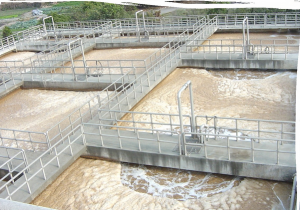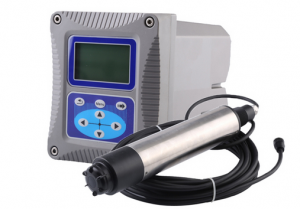Why Monitoring Dissolved Oxygen (DO) Is Crucial in Today’s Environmental Landscape
Environmental compliance is tightening globally—from California and the industrial Midwest to the Ruhr in Germany and Northern Italy. With stricter standards, projects are being upgraded to meet modern environmental regulations. Non-compliance can result in hefty fines or forced shutdowns by environmental authorities. In today’s market, real-time monitoring of key parameters like pH, DO (Dissolved Oxygen), and COD (Chemical Oxygen Demand) is not optional but mandatory.
What Is Dissolved Oxygen (DO)?
Dissolved Oxygen (DO) refers to the amount of oxygen present in water, typically measured in mg/L or ppm. DO is an essential parameter because:
- Aerobic bacteria require oxygen to break down organic pollutants.
- When DO levels drop too low, anaerobic bacteria take over, leading to putrefaction, black water, foul odors, and diminished self-purification capacity.
In short, DO is a key indicator of a water body’s health. A rapid rebound in DO after depletion suggests a healthy system, whereas slow recovery is a red flag for severe pollution and fragile ecological resilience.
Factors Affecting DO Levels
- Oxygen partial pressure in air
- Atmospheric pressure
- Water temperature
- Water quality
Understanding these factors is crucial for interpreting DO readings and ensuring accurate water quality assessment.
Common Applications for Dissolved Oxygen Monitoring
Aquaculture
Purpose: Ensures fish and aquatic life receive sufficient oxygen.
Benefit: Enables real-time alerts and automated aeration to sustain healthy ecosystems.
Environmental Water Monitoring
Purpose: Assesses pollution levels and the ecological health of lakes, rivers, and coastal zones.
Benefit: Helps prevent eutrophication and guides remediation efforts.
Wastewater Treatment Plants (WWTPs)
Purpose: DO is a crucial control variable in aerobic, anaerobic, and aeration tanks.
Benefit: Supports microbial balance and treatment efficiency by working alongside parameters like BOD/COD.
Corrosion Control in Industrial Water Systems
Purpose: Monitoring ultra-low DO levels (in ppb/μg/L) prevents oxygen-induced corrosion in steel pipelines.
Benefit: Critical for power plants and boiler systems where corrosion can lead to costly repairs.
Two Leading DO Sensing Technologies
1. Electrochemical (Membrane-Based) Sensors
How They Work: Also known as polarographic or Clark-type sensors, these devices use a semi-permeable membrane to separate an electrolyte chamber from the water. Oxygen diffuses through the membrane, is reduced at the platinum cathode, and generates a current proportional to the DO level.
Pros: Proven technology with good sensitivity.
Cons: Require warm-up time (15–30 minutes), consume oxygen, and demand regular maintenance (electrolyte refill, membrane replacement, frequent recalibration).
2. Optical (Luminescent) Sensors
How They Work: These sensors use a built-in light source to emit blue light, exciting a luminescent dye. The dye emits red light; however, oxygen quenches this fluorescence (dynamic quenching). The sensor measures the phase shift or decay in light intensity to calculate DO concentration.
Pros: No warm-up, no oxygen consumption, minimal maintenance (often 1–2 years continuous use), highly accurate and stable, and interference-free.
Cons: Higher upfront cost (typically $1,200–$3,000 USD vs. $300–$800 USD for membrane sensors).
Sensor Selection Guide
Membrane-Based Sensors
Best For: Applications where initial cost is a major factor and short-term measurements are acceptable.
Challenges: Require proper stirring or flow to avoid oxygen depletion; sensitive to bubbles and require frequent maintenance.
Optical Sensors
Best For: Long-term, high-precision monitoring in demanding environments.
Consideration: While they are more expensive upfront, they reduce downtime, have a lower maintenance burden, and provide superior accuracy and stability over time.
For most industries today—where reliability, stability, and minimal maintenance are prioritized—optical DO sensors are the smarter long-term investment.
Final Word: Invest in Quality DO Monitoring
In the face of rigorous environmental regulations, accurate DO monitoring is not only a regulatory requirement—it’s a vital component of a healthy ecosystem and efficient industrial operation.
If you seek long-term reliability, low maintenance, and superior data accuracy, consider optical DO meters despite their higher initial cost. They offer a smarter solution by delivering consistent performance, reducing calibration frequency, and providing higher confidence in your environmental data.
Ready to Upgrade Your DO Monitoring System?
Post time: Apr-14-2025






